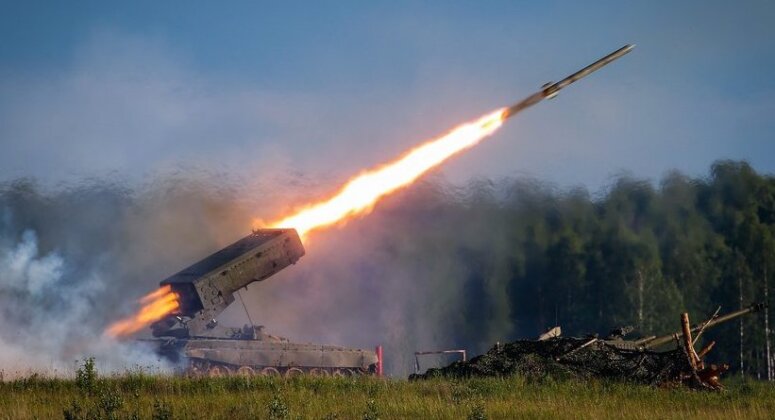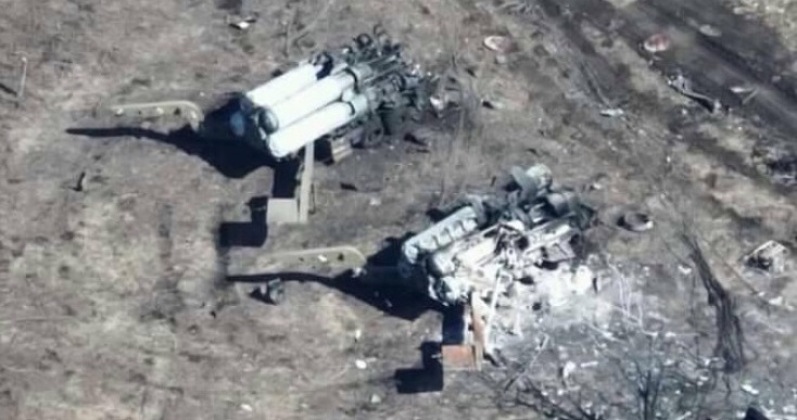News
Battlefield in Ukraine: Polish Contractors Join Bakhmut Frontlines as Russian Fighters Take Out S-300 Air Defences
Amid ongoing hostilities in Eastern Ukraine large numbers of Polish military contractors have reportedly been deployed to reinforce Ukrainian positions, according to the head of the Russian Wagner Group paramilitary force Yevgeny Prigozhin who has overseen many of the operations in the area. “Well-trained enemy units are now being tossed into Bakhmut. Polish speech all day long. While I used to say there were few mercenaries, now there’s a large number of them. Ukrainian special forces. A most bloody battle is going on… We will last [in Bakhmut] for another two or three weeks, as long as there’s at least one bullet in a rifle magazine,” he stated. Prigozhin’s statement was far from isolated with former senior advisor to the U.S. Secretary of Defence U.S. Army Colonel (ret.) Douglas McGregor being among multiple Western sources to report on very large personnel contributions from Polish military contractor organisations. McGregor reported the presence of an estimated 20,000 contractors from Poland, allegedly wearing Ukrainian uniforms, who played important roles in the war effort alongside other contractors from across the Western world. Contractors have been relied on in a very wide range of roles, and have become particularly essential as Ukraine has received growing quantities of increasingly complex weaponry from its Western supporters which personnel from overseas have been key to facilitating the seamless integration of due to their pre existing training.

Months of fighting in Bakhmut have taken a heavy toll on both sides, with Ukrainian casualties reportedly being extreme as the Russian Military has focused on maximising attrition over other objectives such as gaining territory. Former U.S. Marine Troy Offenbecker, who fought in the International Legion on the frontlines in Ukraine, summarised to this effect regarding the state of affairs for Ukrainian and allied forces in Bakhmut: “a lot of casualties. The life expectancy is around four hours on the frontline.” As some of the deadliest fighting since the war began clashes were ”chaotic” and were dubbed “the meat grinder” by the Ukrainians. Colonel McGregor similarly assessed: “the Russians went over to a defensive posture, and they have ground away at the Ukrainians who poured tens of thousands of soldiers into their meat grinder. The Russians have taken very light casualties compared to the Ukrainians, and the Ukrainians have lost most of their capable forces and capable manpower.” These reports were corroborated by Ukraine’s ambassador in London Vadim Pristaiko who stated in early April that while the country had kept its frontline losses secret: “When the war is over, we will acknowledge this. I think it will be a horrible number,”

Ukrainian forces in frontline areas such as Bakhmut have relied heavily on ground based air defences to deny the Russian Air Force the ability to turn the tide of war on the ground with more active intervention and provision of close air support. It has depended on a network built around the Soviet S-300 and BuK systems, which were built in the 1980s and inherited in very large quantities by Ukraine in 1991 providing it with what was long considered the most capable air defences in Europe. While air defences have proven highly successful despite their age, the inability to replenish stocks with new production has resulted in their depletion – the first serious warnings of which were given in December 2022. Pentagon officials more recently concluded that Ukrainian air defences assigned to protect forces on the frontlines would “be completely reduced” by May 23, allowing Russia’s very large air power advantage to potentially play a much more decisive role.

Amid concerns regarding the state of Ukraine’s air defences, the Russian Air Force was reported on April 27 to have succeeded in eliminating four missile launchers for Ukrainian S-300 air defence systems on the frontlines in Kherson. The kinds of aircraft used was not disclosed, although it was confirmed that Lancet loitering munitions were employed for the mission. A German supplied Gepard anti aircraft gun was also destroyed, with 14 Ukrainian personnel killed and 10 more wounded in the strike. Russian air defence suppression capabilities have proven very limited, particularly compared to their sophisticated state during the Soviet era. The reported neutralisation of multiple S-300s launchers nevertheless potentially indicates that it may be placing a greater emphasis on such operations as Ukraine’s defence network comes under greater strain – or that it has recently improved its air defence suppression capabilities in recent months. The country is expected to receive its first dedicated air defence suppression aircraft since the Soviet era in before 2025.












